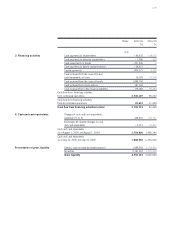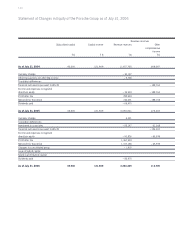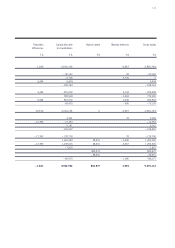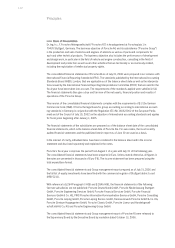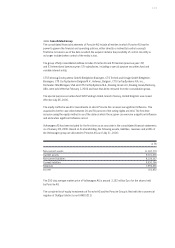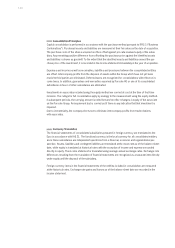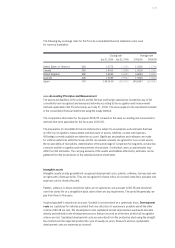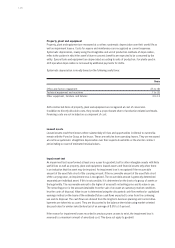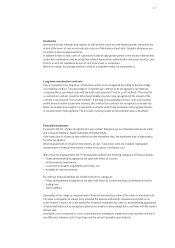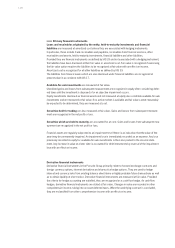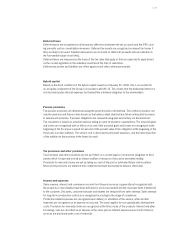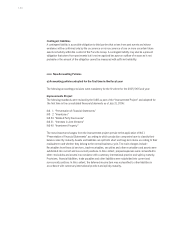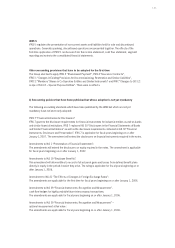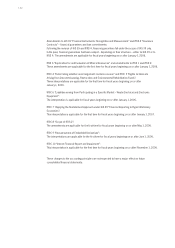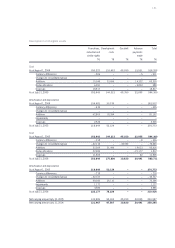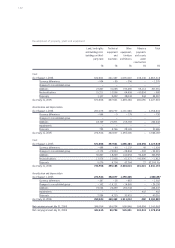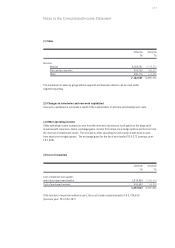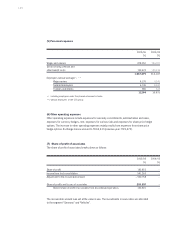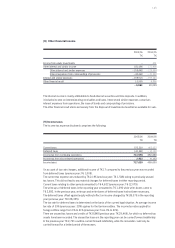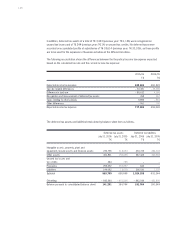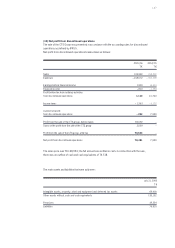Porsche 2005 Annual Report Download - page 121
Download and view the complete annual report
Please find page 121 of the 2005 Porsche annual report below. You can navigate through the pages in the report by either clicking on the pages listed below, or by using the keyword search tool below to find specific information within the annual report.119
Deferred taxes
Deferred taxes are recognized on all temporary differences between the tax accounts and the IFRS carry-
ing amounts and on consolidation measures. Deferred tax assets are recognized on unused tax losses if
they are likely to be used. Valuation allowances are recorded on deferred tax assets whose realization in
the foreseeable future is not likely.
Deferred taxes are measured on the basis of the tax rates that apply or that are expected to apply based
on the current legislation in the individual countries at the time of realization.
Deferred tax assets and liabilities are offset against each other, where permissible.
Hybrid capital
Based on the bond conditions of the hybrid capital issued as of January 30, 2006, this is accounted for
as an equity component of the Group in accordance with IAS 32. This means that the deductible interest is
not disclosed under interest expenses but treated like a dividend obligation to the shareholders.
Pension provisions
The pension provisions are determined using the projected unit credit method. This method considers not
only the pensions and future claims known on the balance sheet date but also future anticipated increases
in salaries and pensions. If pension obligations are reinsured using plan assets they are disclosed net.
The calculation is based on actuarial opinions taking account of biometric assumptions. The actuarial gains
and losses are recognized with an effect on income if the actuarial gains and losses not recognized at the
beginning of the fiscal year exceed ten percent of the present value of the obligation at the beginning of the
fiscal year (corridor method). The service cost is disclosed in personnel expenses, and the interest portion
of the addition to the provision in the financial result.
Tax provisions and other provisions
Tax provisions and other provisions are set up if there is a current legal or constructive obligation to third
parties which is expected to lead to a future outflow of resources that can be estimated reliably.
Provisions for warranty claims are set up taking account of the past or estimated future claims pattern.
Non-current provisions are stated at their settlement amount discounted to balance sheet date.
Income and expenses
Sales revenue, interest and commission income from financial services is generally not recognized until
the products or merchandise have been delivered or services provided and the risks have been transferred
to the customer. Discounts, customer bonuses and rebates are deducted from sales revenue. Sales revenue
for long-term construction contracts is recognized according to the stage of completion.
Production-related expenses are recognized upon delivery or utilization of the service, while all other
expenses are recognized as an expense as incurred. The same applies for non-capitalizable development
costs. Provisions for warranty claims are recognized at the time of sale of the products. Interest and other
borrowing costs are recorded as an expense in the same period. Interest expenses incurred for financial
services are disclosed under cost of materials.


